Life Support Systems
AirMAX Life Support
The AirMAX Life Support System design is for non-built-for-purpose buildings that do not meet acceptable leak tightness for shelter-in-place. With ventilation shut down, a typical building can have up to five air changes per hour or higher depending on wind speed. Door operation as people enter can potentially bring additional contaminants from outside the shelter. As contaminated air infiltrates a building, the level of protection provided to the occupants diminished with time.
A safer and more economical alternative is to seal smaller existing rooms with a larger building. There are cost-effective means to create a “very tight” room (<0.04CFM per square foot of floor space) within a building by using specifically designed components such as clean room ceiling tiles, sealing doors, and vestibules. These tightly sealed rooms, however, cannot be occupied for long periods without the risk of occupants producing a high level of carbon dioxide and dangerously reducing oxygen levels.
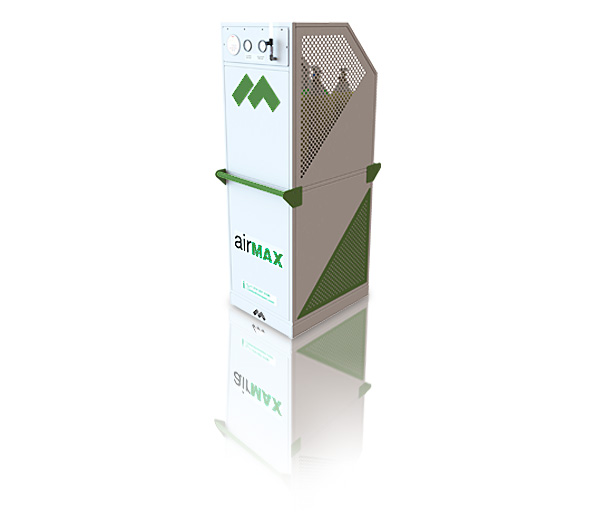
The MineARC AirMAX Life Support System combines two critical life support features. A Positive Pressure Maintenance System (PPMS) to keep toxic gases out and a supplemental oxygen delivery system. Optional Aura-FX Gas Monitoring ensures that external contaminants cannot enter the room while altering users to changes in gas levels.
- Mobile design for easy relocation
- Oxygen and compressed air cylinder storage
- Oxygen Delivery System
- Positive Pressure Maintenance System (>0.14psi)
- 120/240V electrical connection
- Optional Aura-FX Gas Monitoring (NH3, CL etc.)
- Occupancy: 4 Hours
- Voltage: 120V or 240V
- Depth: 36.25in (0.92m)
- Width: 25.25in (0.62m)
- Height: 76in (1.93m)
- Weight (Est.): 1,100lbs (500kg)
AirBANK Pressure System
MineARC’s AirBANK Pressure System offers a simple modular solution; ensuring occupants remain safe inside of a designated shelter-in-place for a specified duration. A critical requirement for any shelter-in-place location is maintaining internal positive pressure in order to prevent the ingress of toxic gases resulting from an accidental release.
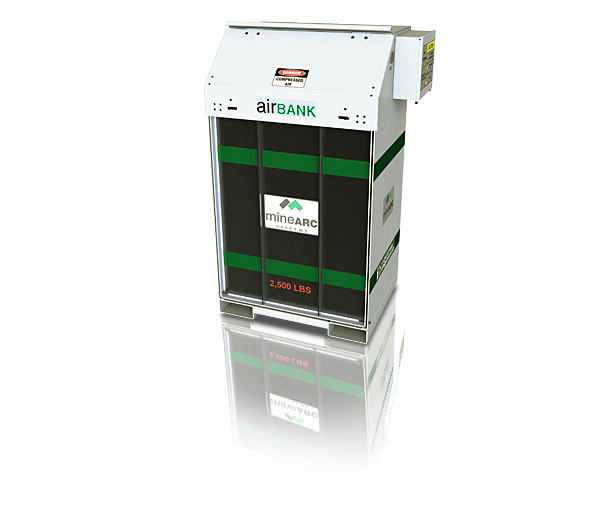
AirBANK Pressure System provides rapid pressurization, which is activated and maintained using the AirBANK CONTROL via HMI touchscreen. MineARC’s integrated Aura-FX Gas Monitor ensures breathable air remains within acceptable limits. Alternatively, rooms can be fitted with supplementary oxygen and carbon dioxide scrubbing system.
The AirBANK Pressure System is designed to store 11 4,500psi or 6,000psi cylinders, and allows any number of cylinder racks to be daisy-chained as required. Each rack is leak protected by a check valve and electric solenoid, and features a panel mounted gauge to display the high and low pressure level of the unit.
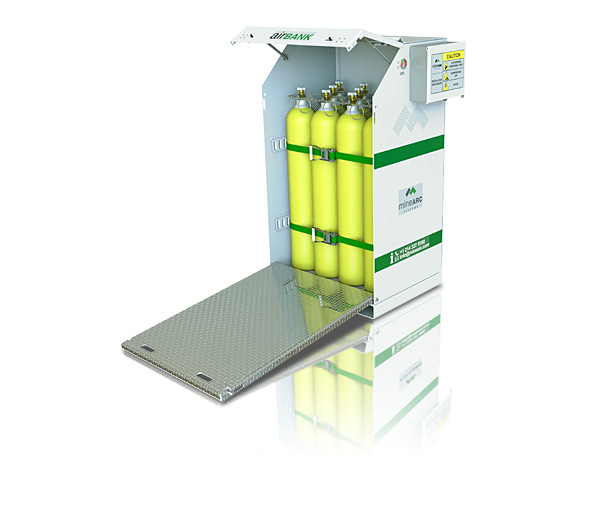
- Leak protected by check valve and electric solenoid
- Panel mounted gauge to display high and low pressure levels
- Stainless steel components throughout
- 1822.45mm / 71-3/4” x 1016mm / 40” x 812.8mm / 32”
- 907kg / 4,000lbs
- Designed to store 11 4,500psi or 6,000psi cylinders
AirBANK CONTROL features an active by-pass of the system if internal gas levels are not within breathable air limits. The Aura-FX monitors and displays gas levels in real-time, including site-specific toxic gases if necessary.
AirGEN Scrubbing System
The AirGEN Scrubbing System is a standalone air regenerative system that ‘scrubs’ the air inside enclosed spaces – removing harmful gases such as CO (carbon monoxide) and CO2 (carbon dioxide) – a vital requirement for any sealed environment sheltering human life for an extended period of time.
Only a shelter that is 100% sealed from the external environment, guarantees safety from the ingress of smoke and other harmful toxins. Both carbon monoxide (CO) and carbon dioxide (CO2) can become lethal in high concentrations. This valuable life-saving equipment has been designed to operate standalone in any refuge chamber, safe haven, bomb shelter or survival shelter.
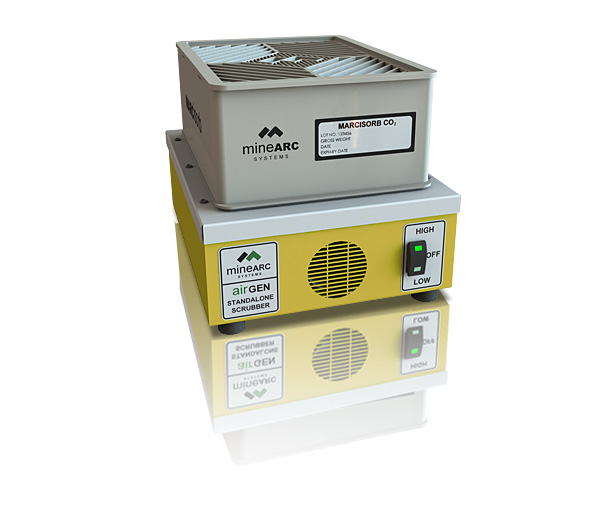
The MineARC AirGEN Scrubbing System is a standalone air regenerative system that ‘scrubs’ the air inside of an enclosed location, effectively cleaning it so occupants can breathe.
Humans consume oxygen and expire carbon dioxide (CO2) as part of normal respiration. In high enough concentrations, CO2 can cause serious injury, leading to a loss of consciousness and eventually death. Removal of CO2 is therefore a vital necessity for any shelter-in-place location, especially where CO2 concentrations exceed one percent over the entrapment duration.
The AirGEN Scrubbing System is simple to operate with only a single switch and is powered from its own internal battery supply.
Shelter-in-Place Integrity Testing
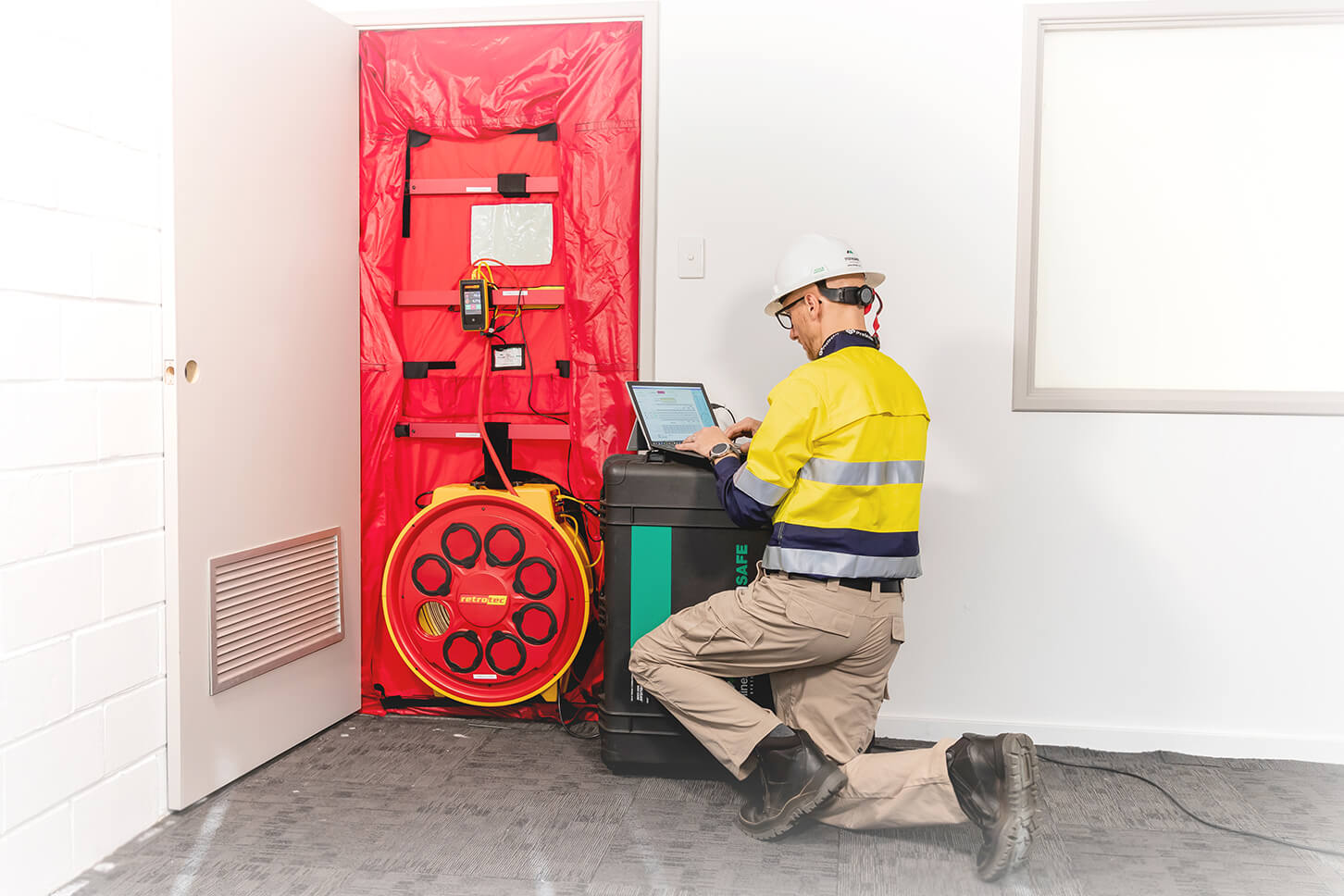 Understanding the present leak rate can determine the best course of action moving forward. Allowing you to explore your available options; whether remediation and structural works to seal off the space or where a building is concluded to be impractical to convert, provide external safe rooms.
Understanding the present leak rate can determine the best course of action moving forward. Allowing you to explore your available options; whether remediation and structural works to seal off the space or where a building is concluded to be impractical to convert, provide external safe rooms.
MineARC Systems have the testing ability in-house that allows us to establish baseline integrity readings and provide a greater indication of your current level of protection against ingress.
Our integrity testing system is engineered to be portable and able to travel to individual sites for verification and auditing purposes and is ideal for generating an accurate baseline position for risk assessment.
Contact MineARC to have your site tested.



